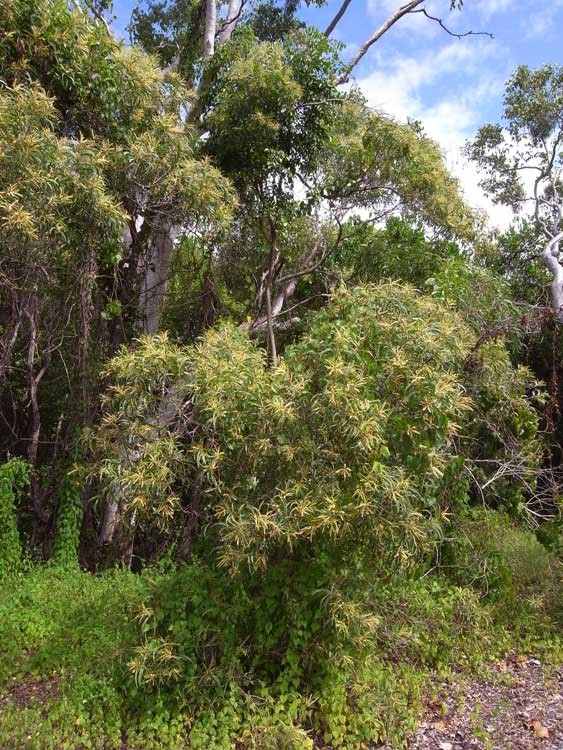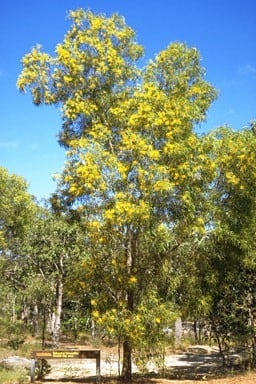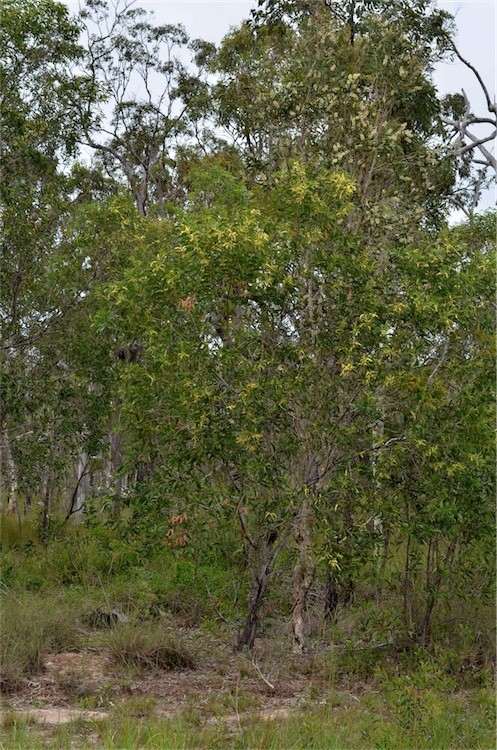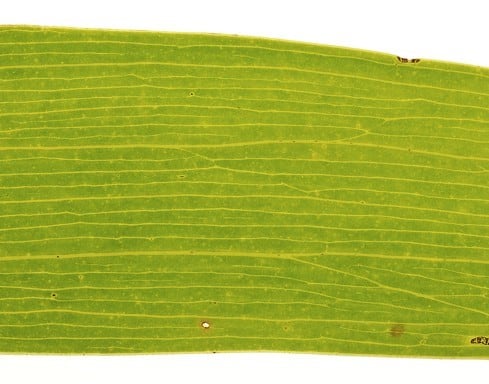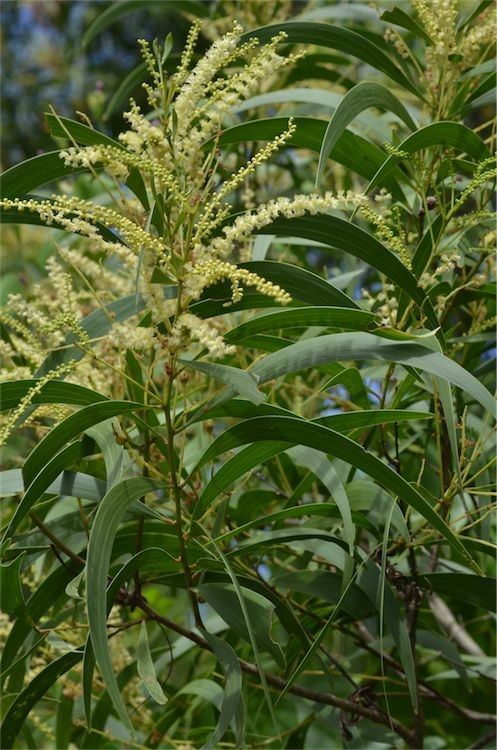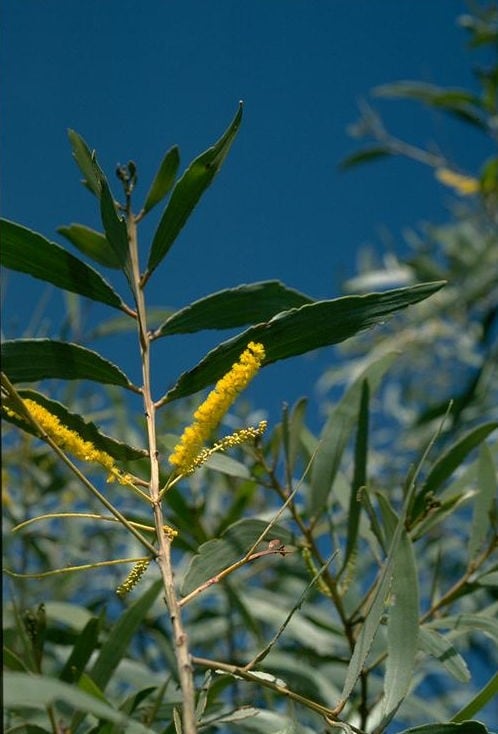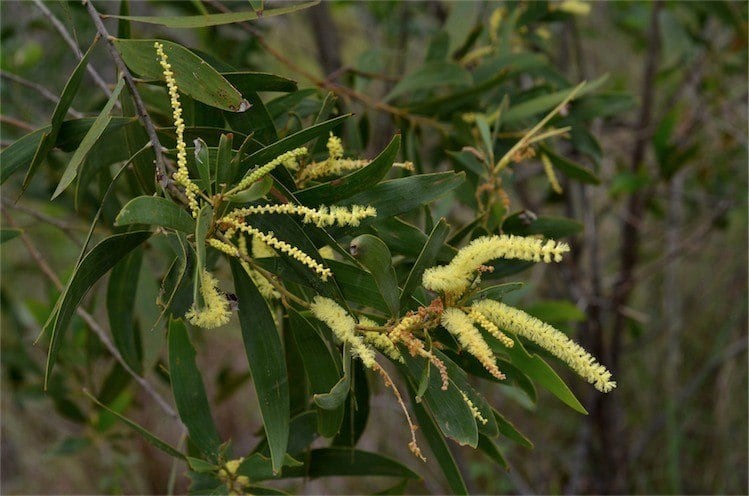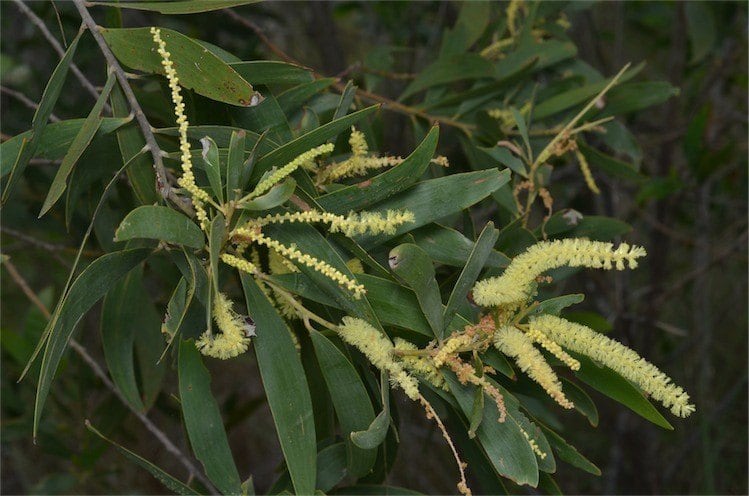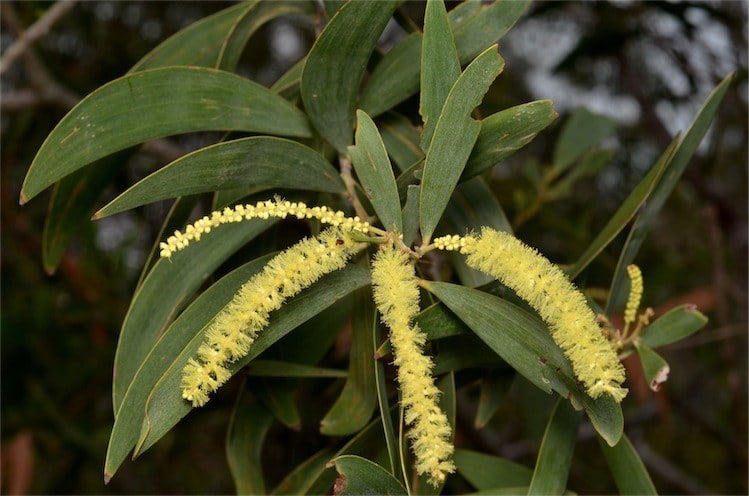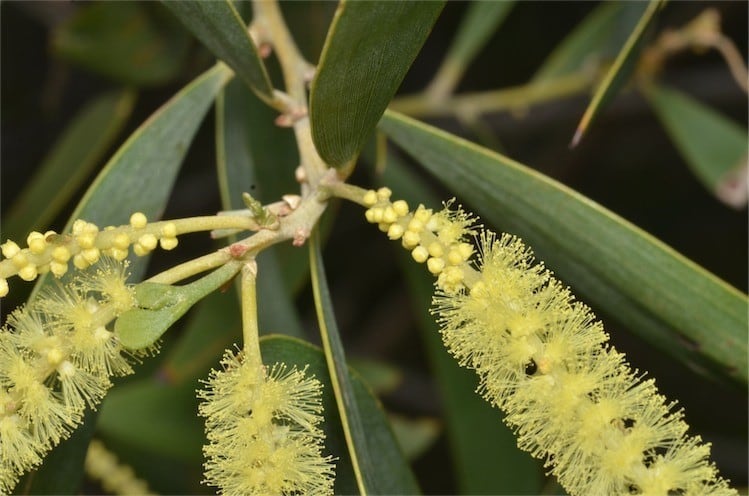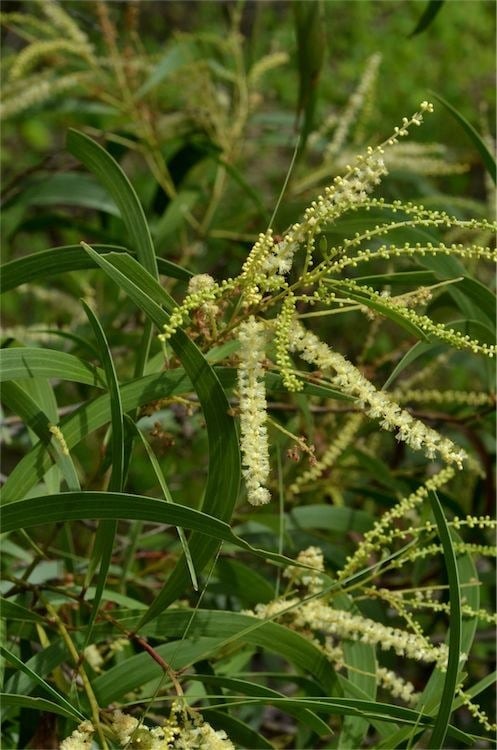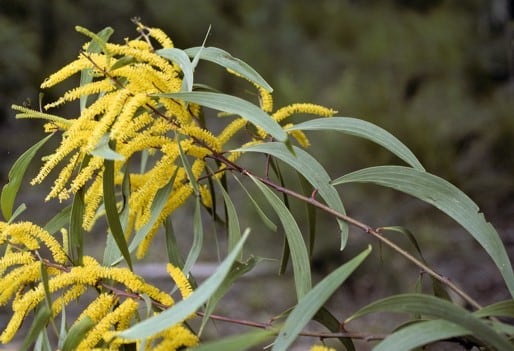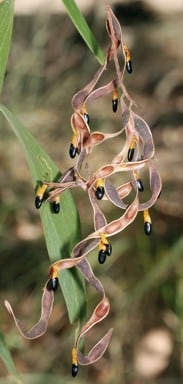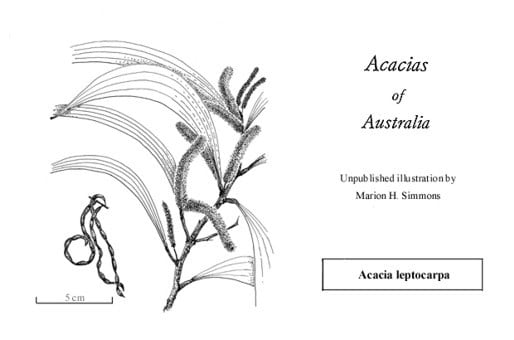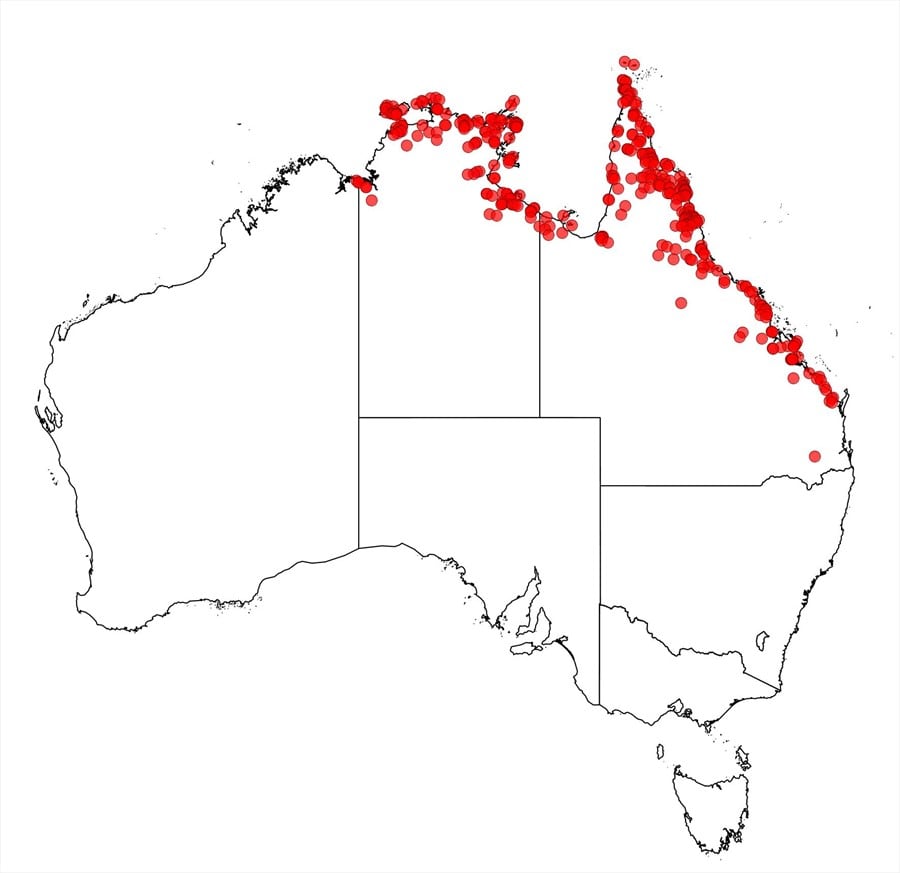Acacia leptocarpa A.Cunn. ex Benth.
WATTLE
Acacias of Australia
Family
Fabaceae
Distribution
Occurs in tropical Australia from Carlton Hill Stn in northern W.A. eastwards to Arnhem Land and the Gulf of Carpentaria, including offshore islands of N.T. (N of c. 17ºS), to Cape York southwards along the eastern coast to c. 26ºS, Qld. Also recorded from southern New Guinea, fide L.Pedley, Contrib. Queensland Herb. 18: 19 (1975).
Description
Tree to 15 m high, rarely a shrub to 4 m. Bark ‘ironbark’ type, dark grey to almost black. Branchlets angular towards apices, lenticellate, glabrous. Phyllodes narrowly elliptic, attentuated towards both ends, markedly falcate, (8–) 11–20 (–27) cm long, (6–) 10–35 (–55) mm wide, thinly coriaceous, glabrous, with 3 prominent main nerves (the lower 2 often confluent towards base and the uppermost sometimes confluent with upper margin before reaching apex); minor nerves 1–3 per mm, longitudinal, occasionally anastomosing; gland usually 1, basal, conspicuous. Spikes 3.5–9.5 cm long, yellow to golden. Flowers 5-merous; calyx 0.4–0.9 mm long, sinuate or dissected to 1/4, with fimbriate margins, ±glabrous; corolla 1.3–2 mm long, dissected to 1/2, glabrous; ovary densely pubescent. Pods slightly or variably constricted between and raised over seeds, curved, curled or twisted, 8–15 cm long, 2–3.5 (–5) mm wide, thinly coriaceous to chartaceous, glabrous. Seeds longitudinal, oblong-elliptic, 3–4 mm long, dark brown; pleurogram U-shaped; funicle-aril massive, longer than seed, yellow-orange.
Habitat
Grows in open eucalypt and/or Melaleuca woodlands, in sandy or rocky soils, sometimes on laterite.
Specimens
W.A.: Carlton Hill Stn, M.W.McDonald 1919 (BRI, CANB, PERTH). N.T.: Croker Is., Cape Croker, C.R.Dunlop 6946 (BRI, DNA, MEL, NSW); 25 km W of Borroloola, M.O.Parker 966 (DNA, K, NSW). Qld: 56.8 km by road NW of ‘Lakeland Downs’, R.G.Coveny 7011 & P.Hind (BRI, CANB, K, MEL, NSW, QRS, US); c. 14 km SW of Agnes Water, L.W.Jessup 347 & G.P.Guymer (BRI, CANB, ILL, K, MEL, MO, NSW, PERTH).
Notes
Details of ecology, utilisation, etc. of A. leptocarpa are given in J.W.Turnbull (ed.), Multipurpose Austral. Trees & Shrubs 152 (1986).
Similar to A. cowleana and A. elachantha but distinguished by a combination of its glabrous branchlets, glabrous and thinner phyllodes, commonly longer flower-spikes which occur in groups of 2–5 within the phyllode axils and its generally longer, more curved or twisted pods. Possibly also with affinities to A. tropica and A. rubricaulis. A putative, rare hybrid between A. leptocarpa and A. polystachya occurs NW of Townsville (R.J.Cumming 14870, BRI).
FOA Reference
Data derived from Flora of Australia Volumes 11A (2001), 11B (2001) and 12 (1998), products of ABRS, ©Commonwealth of Australia
Author
Minor edits by B.R.Maslin & J.Rogers
Dr M.D.Tindale and Dr P.G.Kodela with the assistance of M.Bedward, S.J.Davies, C.Herscovitch, D.A.Keith and/or D.A.Morrison
This identification key and fact sheets are available as a mobile application:
URL: https://apps.lucidcentral.org/wattle/
© Copyright 2018. All rights reserved.
